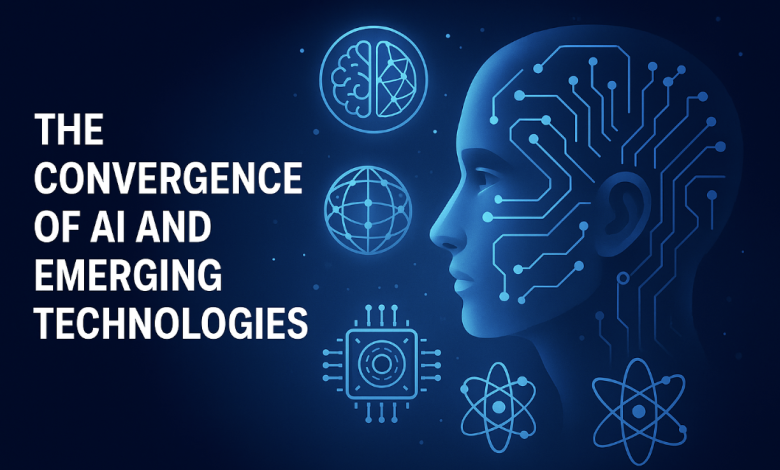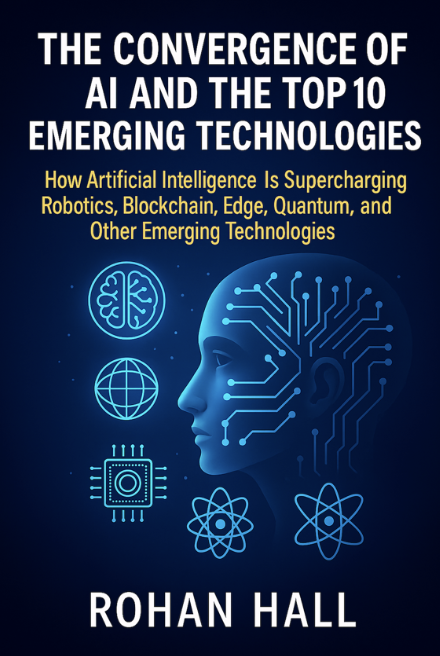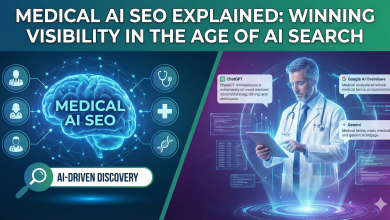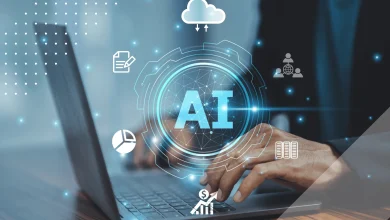
This feature article, adapted from Rohan Hall’s book The Convergence of AI and the Top 10 Emerging Technologies, explores how artificial intelligence has become the integrative force driving the convergence of the world’s most transformative technologies — from blockchain and robotics to biotechnology and advanced connectivity. Written for executive and innovation leaders, it explains how “compound intelligence” is reshaping business models, industries, and human experience.
Introduction: A New Era of Convergence
This article is drawn from concepts explored in my book The Convergence of AI and the Top 10 Emerging Technologies. In it, I describe how innovation has entered a new evolutionary phase — one defined not by isolated breakthroughs, but by convergence.
Artificial intelligence has become the gravitational center connecting once-separate technologies such as blockchain, quantum computing, and biotechnology. Each discipline amplifies the others, accelerating progress at a pace humanity has never experienced.
This convergence is not a theoretical vision. It’s a measurable, global transformation reshaping the foundations of business, healthcare, and communication. Understanding how AI orchestrates this integration is no longer optional for leaders — it’s the new baseline for strategic relevance.
AI: The Integrative Force
AI’s true power lies in integration. It acts as a universal translator between systems that once operated in silos — converting human language, visual data, biological patterns, and digital transactions into a single coherent intelligence layer.
When these domains begin to inform one another, we enter the era of compound intelligence — a concept I developed in The Convergence of AI and the Top 10 Emerging Technologies to describe how multiple exponential technologies combine to create outcomes far greater than the sum of their parts.
AI is no longer one vertical among many. It is the infrastructure of modern innovation.
AI + IoT: Intelligence at the Edge
The Internet of Things gives us billions of data points every second; AI gives them context and meaning. The next stage of IoT isn’t about connected devices — it’s about aware systems.
Factories now use edge AI to process sensor data locally and optimize production in real time. Healthcare wearables continuously analyze biometric signals to detect early-stage health risks. The shift from data collection to intelligent interpretation is what transforms efficiency into foresight.
AI + Blockchain: Trust in the Age of Automation
As AI systems become more autonomous, trust becomes the defining business asset. Blockchain provides the immutable foundation for verifying AI decisions and ensuring accountability.
At OceSha Ventures, we integrate blockchain into AI pipelines to secure data provenance and enable auditability in sectors like healthcare and finance. The result: systems that are not only intelligent, but verifiably ethical. Blockchain doesn’t make AI smarter — it makes it trustworthy.
Concepts in this article are adapted from Rohan Hall’s book The Convergence of AI and the Top 10 Emerging Technologies.
Concepts in this article are adapted from Rohan Hall’s book The Convergence of AI and the Top 10 Emerging Technologies.
AI + Robotics: From Automation to Autonomy
AI brings cognition to robotics. Where industrial machines once followed rigid scripts, modern robots now learn from their environments.
In logistics, agriculture, and manufacturing, robots adapt to uncertainty in real time. They collaborate with humans instead of replacing them. As explored in The Convergence of AI and the Top 10 Emerging Technologies, the real revolution is not mechanical precision, but adaptive purpose — machines that don’t just move, but understand why they move.
AI + Connectivity: The 5G and Edge Revolution
5G and edge computing give AI a new dimension: proximity. With near-zero latency, AI can now operate at the source of data — in vehicles, drones, and smart infrastructure — enabling real-time decision-making at scale.
This distributed intelligence is the backbone of the next industrial era. Businesses that embrace this architecture will outpace those still relying on centralized, cloud-only models.
AI + Human Experience: Speak & Play and the New Frontier
At OceSha Ventures, we see convergence not only in technology but in human experience. Our project Speak & Play, developed through Autism Inventory, uses AI to support early childhood communication and language development.
The platform blends natural language processing, speech analytics, and visual data representation to empower families and educators with meaningful insight. It represents the synthesis of multiple converging technologies — AI, behavioral science, and human-centered design — brought together for a single purpose: enabling better communication between people.
This is convergence made tangible — and deeply personal.
Strategic Imperatives for Business Leaders
For executives, convergence changes the rules of innovation. Here are three principles I share with founders and corporate leaders across OceSha Ventures’ ecosystem:
- Think Ecosystem, Not Enterprise.
The next generation of breakthroughs will emerge at the intersections between sectors — where AI meets healthcare, or robotics meets materials science. - Design for Data Synergy.
Each technology generates unique data. The competitive edge comes from harmonizing these streams into a unified intelligence network. - Lead with Transparency and Trust.
In the convergence era, governance is a growth strategy. Ethical AI, explainability, and accountability frameworks are what sustain long-term brand and investor trust.
The Convergence Flywheel
The convergence model works like a flywheel: AI accelerates robotics; robotics generates IoT data; IoT feeds AI models; blockchain secures the results; and quantum computing multiplies performance.
Each turn increases speed and precision, compounding innovation across the entire ecosystem. Businesses that understand this cycle — and position themselves at its center — will be the category leaders of the next decade.
Conclusion: The Next Great Transformation
The revolutions of the past were defined by singular breakthroughs: steam, electricity, computing. The revolution now unfolding is defined by synthesis.
AI is not simply another wave — it is the tide pulling all others together. It is the unifying intelligence that transforms isolated technologies into an interdependent, self-optimizing network.
This is the future envisioned in The Convergence of AI and the Top 10 Emerging Technologies: a future where convergence drives exponential growth, accelerates discovery, and redefines what it means to innovate responsibly.





